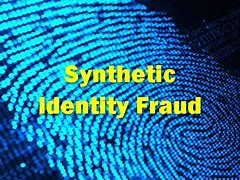imply stated, synthetic identity theft is when a fraudster combines the personal information of different real-life people to create an authentic-looking digital identity.
These identities can include Personally Identifiable Information (PII) such as name, identity card number, birth date and home address (including the use of children’s IDs since they have no credit records).
This data often comes from the global breaches we hear about on a near-daily basis.
When these data points are combined in the right way, new identities are crafted to use the real-world parts to create a convincing online consumer.
Yet, synthetic identity theft isn’t a quick crime of opportunity but a complex and large scale fraud scheme that designs user accounts to mimic a real-world person in order to trick a bank or company into providing goods or lines of credit to a user who doesn’t exist.
And while this fraud scheme can take months to years to develop, it’s growing in Asia.
How Big of a Threat is Synthetic Identity in Asia?
FICO, during its Asia Pacific Fraud Forum in 2018 , reported that 6 of the 10 banks in Asia Pacific were experiencing a rise in application fraud with synthetic identities.
And as the Aite Group predicts in a recent BankInfoSecurity article, synthetic identity fraud may grow to $2.42 billion in 2023.
These accounts not only seem real, fraudsters use these accounts to acquire items or credit and pay the bills for these accounts, just like good customers.
Over time, with the increased credit, the fraudsters apply for additional accounts with bigger lines of credit from lenders.
They may take months or years to nurture an identity to preserve the integrity of these profiles and establish credibility.
A talented fraudster might create synthetic identities to maintain strong credit scores. A Singapore fraudster may take time to build a solid CBS Credit Score.
Their American counterpart, meanwhile, has spent months or even years building a high FICO score.
Then, all of a sudden, the credit cards get maxed out and the money, and the user, disappear. Attempts to recuperate money fail because the user was never a real person, making it harder to find those responsible.
Spotting Fraud
With growing demand for lenders and goods, it is often difficult for any business to ensure that their customer base is free of these criminals.
In Ekata’s eBook, Synthetic Identity Theft , readers can learn more about the common techniques fraudsters employ to commit fraud, why synthetic identity is difficult to find and how Ekata can help reduce the threat.



